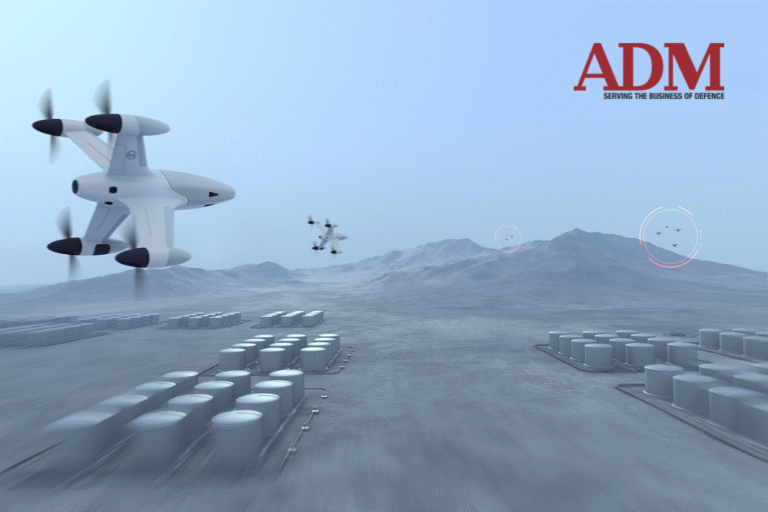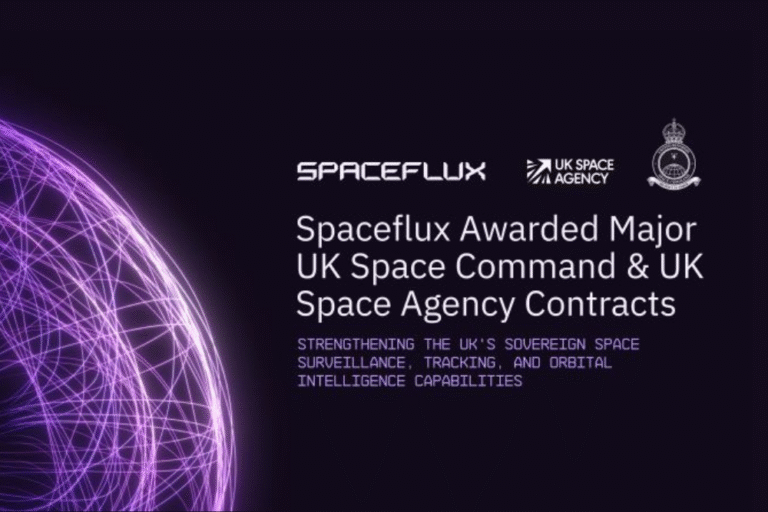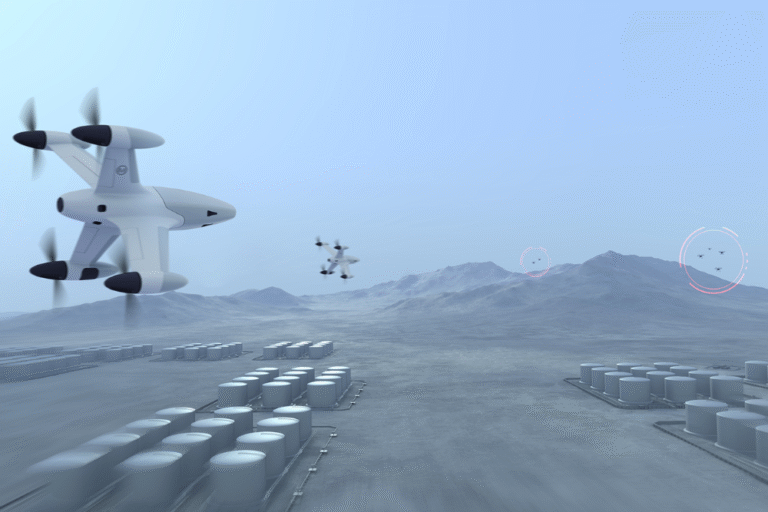
 Head of Air Force Capability, Air Vice-Marshal Cath Roberts AM, CSC, inside the Electro Optic Systems (EOS) control room at Mount Stromlo Observatory, Canberra. Photo: LAC Adam Abela
Head of Air Force Capability, Air Vice-Marshal Cath Roberts AM, CSC, inside the Electro Optic Systems (EOS) control room at Mount Stromlo Observatory, Canberra. Photo: LAC Adam Abela
15 July 2024
Electro Optic Systems steps up its tracking capabilities
Published in the 2024 Edition | Lachlan Colquhoun | Australian Space Outlook
As space becomes more crowded with satellites, particularly in lower orbits, the tracking of space objects and debris has become critical.
According to the Index of Objects Launched into Outer Space maintained by the United Nations, there were 11,330 individual satellites orbiting the Earth at the end of June 2023, a 37% increase since January 2022.
In 2022, a record 2,474 objects were launched into space, and this was followed up by around 1,400 in 2023.
Canberra-based company EOS—Electro Optic Systems—was founded in 1983 and has grown to be one of the leading global providers of space tracking services, operating and building telescope infrastructure and precision optical instruments.
With the number of objects in space growing so fast, EOS is well-positioned to leverage its long-standing expertise and implement new technology to continue to be a major player in this rapidly expanding and critical area of space tracking services and infrastructure.
Dr James Bennett, Executive Vice President of Space Systems at EOS, explains the company’s evolution, beginning with the construction of satellite laser ranging systems and facilities around the world.
“We have progressed into debris laser ranging using high energy lasers, which we have been doing for over two decades. We have constructed two autonomous observatory facilities in Australia, located at Mount Stromlo in the ACT and Learmonth in Western Australia,” says Bennett.
“The tracking systems we build are not only highly precise and accurate but also applicable to a broader range of activities, such as directed energy, missile tracking, and optical communications.
“We specialise in space situational awareness, space domain awareness, space sustainability, and space control, and we’ve grown to be a service provider ourselves, in addition to building systems for customers.”
Bennett says EOS is looking at implementing high energy laser ranging facilities at various locations around the world.
EOS signed a Memorandum of Understanding in October 2023 with Japanese company EX-Fusion to explore the use of high-power laser technologies, developed for laser fusion purposes, to address the space debris issue.
“EX-Fusion’s work in laser-powered nuclear fusion complements our expertise in lasers and high-accuracy laser beam delivery to space, and presents the potential for innovative solutions to the space debris problem,” says Bennett.
Satellites, explains Bennett, vary in their manoeuvrability capabilities and, for some objects, there is no alternative but to intervene by “nudging one or both of the objects so they can pass safely.”
The force needs to be sufficient to exert enough momentum for the object to change its trajectory, even by just a few centimetres per second in velocity.
“This is a debris mitigation strategy rather than remediation. While future debris removal missions will remove debris from orbit, ours is a mechanism that can assist in the meantime to stabilise the debris growth.”
The “sweet spot” for this debris mitigation technology lies in the crowded low Earth orbit space environment where the risk of collisions is greatest.
The partners hope to integrate their technologies by the end of 2024 or in 2025, prove their combined capability, and then progress to building out a network.
“This is highly specialised, and there are few, if any, companies out there doing what we are doing,” says Bennett.
“There is something of a race to see who gets there first but, in terms of capability, EOS has all of the required technologies: accurate and reliable automated laser beam director telescopes and observatory systems, high-power laser systems, control system software, and mission systems software.”
These capabilities were recognised last year when EOS’ subsidiary, EOS Defense Systems (EOSDS) USA, was awarded two contracts to provide space tracking services to the US government. EOS provides these services to the National Oceanic and Atmospheric Administration (NOAA) government agency’s Office of Space Commerce.
The first contract provides commercial debris laser ranging data for NOAA’s Open Architecture Data Repository, with the second contract providing passive electro-optical observations.
The EOSDS USA team, based in Huntsville, Alabama, will be supported by EOS Space Systems providing services from the Australian ground-based facilities at Mount Stromlo and Learmonth.
In Australia, EOS works in both the civilian and defence domains, providing space domain awareness services.
In 2019, EOS signed a Joint Statement of Strategic Intent and Cooperation with the Australian Space Agency to foster “discussions, collaboration and engagement”, leveraging the company’s expertise in space situational awareness to help foster the domestic space industry.
At that time, the EOS network operated six sensors across the two locations, capable of acquiring over 10,000 high precision space object tracks each week. The goal is to achieve 100,000 tracks per week by the middle of this decade.
EOS has also welcomed Lt General JJ Frewen and Major General Greg Novak to tour their Mount Stromlo facility and see their capabilities in space domain awareness.
“We do work very closely with Defence, and we also collaborate with Australian industry and academia to field new technology using our infrastructure,” says Bennett.
“In the delivery of space domain awareness, there are a few Australian companies participating in these activities, so we work with some of them to provide combined Australian solutions, which is a new thing, and it is growing.
“It is quite different from when I joined the space industry about 13 years ago, because there are new players, and they are coming with good capabilities, and working together can achieve a better outcome.”
Bennett’s work was recognised in 2020 when he was named as Scientist of the Year in the Space Connect Australian Industry Awards.
He is passionate about developing a pathway for talented Australians to work in the local space industry.
“There is still a substantial skills shortage, but if we are to retain our best and brightest here in Australia, we need to be providing a space industry ecosystem which will inspire people to pursue a career and contribute,” Bennett says.
“Fortunately, the situation is different to when I began my career, and we do have an invigorated industry which has grown over the last five years. “Years ago, young people interested in space would be walking around wearing NASA t-shirts. We want them to be wearing Australian Space Agency t-shirts, but while we have come a long way, we are not quite there yet.”









